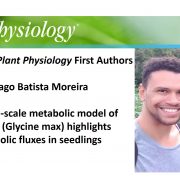
Recognizing Plant Physiology first authors: Thiago Batista Moreira
Plant Physiology, Plant Physiology: Author ProfilesThiago Batista Moreira, first author of A genome-scale metabolic model of soybean (Glycine max) highlights metabolic fluxes in seedlings
Current Position: PhD student at Plant Biochemistry and Physiology Lab, University of Brasília, Brazil
Education: M.Sc. in Botany, University of Brasília, Brazil;…
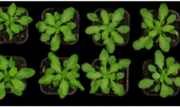
Salicylic acid, senescence, and heterosis
Blog, Plant Physiology, Plant Physiology: News and ViewsFor a number of crops agricultural yields have been boosted by the phenomenon of heterosis or hybrid vigour, where a hybrid outperforms either parent. Understanding the various mechanisms by which heterosis arises may facilitate the breeding of hybrids with increased vigour for further crop varieties…
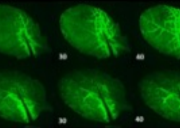
State of (in)flux: Action of a CNGC Ca2+ channel in defense against herbivory
Research, The Plant Cell, The Plant Cell: In BriefPlants have evolved highly sophisticated signalling systems that enable them to coordinate growth and development and respond rapidly to environmental fluctuations. These long-range signals can take the form of mobile small molecules such as phytohormones and RNAs, but can also be electrical signals…
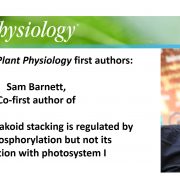
Recognizing Plant Physiology authors: Sam Barnett
Plant Physiology, Plant Physiology: Author ProfilesSam Barnett, co-first author of Dynamic thylakoid stacking is regulated by LHCII phosphorylation but not its interaction with photosystem I
Current Position: Postdoctoral Research Fellow, Mechanobiology Institute, Singapore
Education: PhD in Biophysics, University of Sheffield; MSc Mechanobiology…
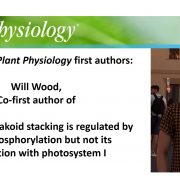
Recognizing Plant Physiology first authors: Will Wood
Plant Physiology, Plant Physiology: Author ProfilesWill Wood, co-first author of Dynamic thylakoid stacking is regulated by LHCII phosphorylation but not its interaction with photosystem I
Current Position: Research Associate at the University of Sheffield
Education: PhD in plant photosynthesis at the University of Sheffield (2017); MSc Mechanistic…
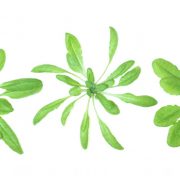
Regulation and Function of a Plant Energy Sensor
Research, The Plant Cell: In a NutshellRamon et al. show how plants have modified the ancient, highly conserved eukaryotic energy sensor to better fit their unique lifestyle and cope with changing environmental conditions. Plant Cell https://doi.org/10.1105/tpc.18.00500
By Nathalie Crepin and Filip Rolland, KU Leuven, Belgium
Background:…
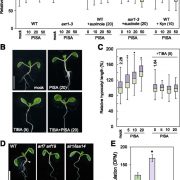
Pinstatic Acid: a Novel Modulator of PIN Trafficking
Plant Physiology, Plant Physiology: On The InsideThe polar subcellular localization of the auxin efflux machinery determines the directionality of auxin flow in plants. In particular, the dynamics of polar localization of PIN proteins regulates the rate and direction of cellular auxin export and this ultimately determines auxin gradients in the tissue.…
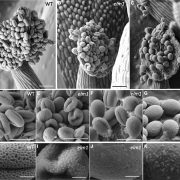
A Role for Mitochondrial Fission in Pollen Growth
Plant Physiology, Plant Physiology: On The InsideThe tapetum is the innermost layer of the anther and encloses the locule wherein pollen develops. In addition to supplying nutrients for pollen growth, the tapetum synthesizes and transfers pollen outer wall precursors for the formation of the pollen outer wall. To synthesize, secrete, and transfer materials…
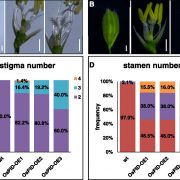
PINOID Is Required for Formation of the Stigma and Style in Rice
Plant Physiology, Plant Physiology: On The InsideIn rice (Oryza sativa), both the male and female floral organs are produced in the same flower: thus, only rarely do rice grains result from cross-pollination. Since cross-pollination is difficult in rice so, too, is the production of hybrid seed. Plants with defective stigmas may have commercial value…

